#Himalayan bulbul
Explore tagged Tumblr posts
Text

Himalayan bulbul, October, 2023, Sattal
#Sattal#bulbul#Himalayan bulbul#Himalayas#Uttarakhand#birds#jungle#forest#green#perches#bird watching#wildlife#yellow#trees
0 notes
Note
white-cheeked bulbul pictures please????

Himalayan Bulbul or White-cheeked Bulbul (Pycnonotus leucogenys), family Pycnonotidae, order Passeriformes, found in Central and South Asia
photograph by Fabinho Vagno Pires
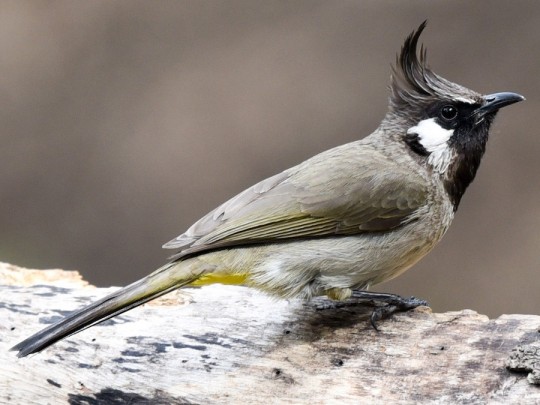
photograph by Bruce Wedderburn
259 notes
·
View notes
Text
Pycnonotus bulbul - round 1, section 3
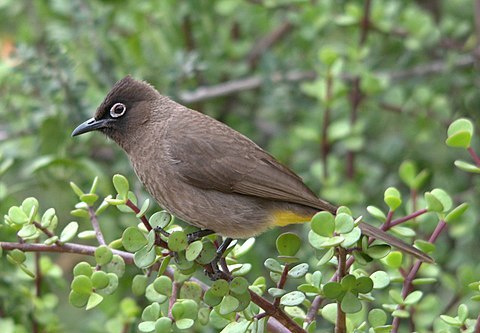
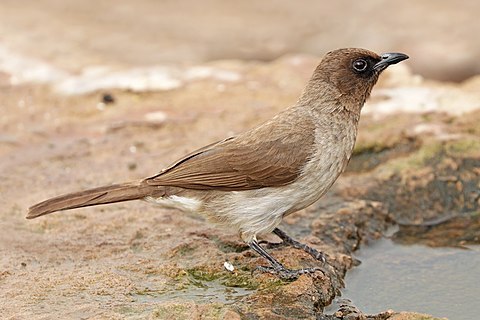
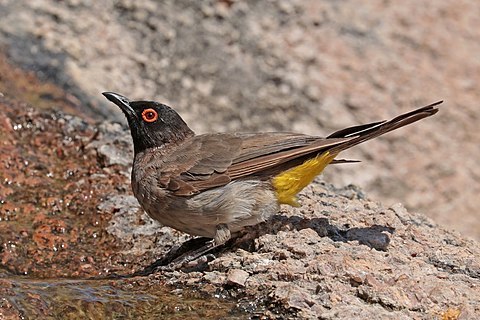
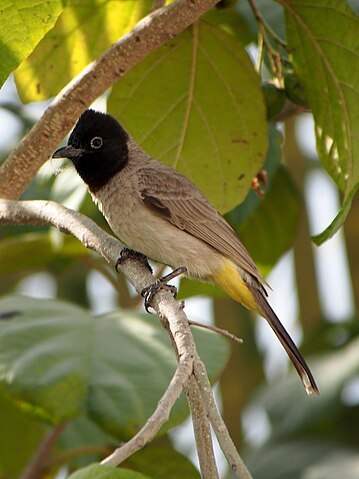
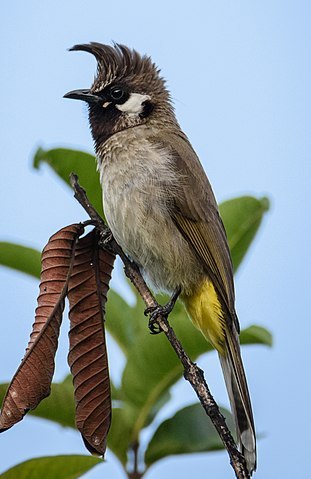
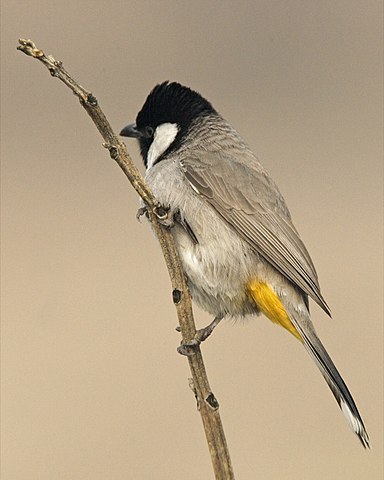

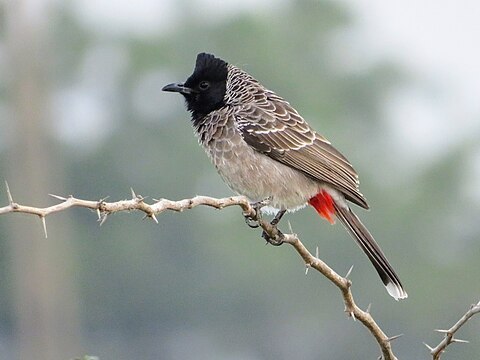
16 notes
·
View notes
Text

August 15 - 20, 2023
- Barbary Partridge
- Himalayan Beautiful Rosefinch
- Blue Whistling-Thrush
- Striated Bulbul
- Mongolian Short-toed Lark
- Slaty Antwren
13 notes
·
View notes
Text

Himalayan Bulbul with a kill Shot on Nikon D500 with Nikkor 200-500mm. Chakki Modh, Himachal Pradesh India. 21 September 2024 EXIF : f 8.0 | S 1/500 | 500mm | ISO 2000 |
#birding#wildbird#birdingphotography#wildlifephotography#birdingdaily#nikon#bird_captures#birds_brilliance
0 notes
Text
Adventure at the Nine-Cornered Lake: Naukuchiatal’s Best Activities

Naukuchiatal Uttarakhand, famed for the nine cornered lake, is a paradise for adventure enthusiasts and nature lovers alike. With its calm, reflective waters surrounded by lush green hills, the nine cornered lake not only offers a tranquil escape but also an array of thrilling activities that make it an ideal destination for every traveler. Whether you’re looking for a peaceful boating experience or an adrenaline rush with paragliding, Naukuchiatal Uttarakhand has something for everyone. Here’s a guide to the top activities around this unique lake.
1. Boating on the Nine-Cornered Lake
One of the most popular ways to experience the nine cornered lake is by boat. Paddleboats, rowboats, and shikaras are available for rent, allowing you to float peacefully on the lake’s calm waters and explore its famed nine corners. Boating is especially beautiful at sunrise or sunset when the lake mirrors the sky's changing colors. It’s a fantastic way to take in the beauty of Naukuchiatal Uttarakhand and get a closer look at the lake’s unique shape.
2. Paragliding Over the Scenic Lake
If you’re up for an adventure with a view, paragliding over the nine cornered lake is a must. This exhilarating activity offers an unmatched view of the lake and its lush surroundings from above. Experienced guides provide tandem flights, making paragliding accessible even for beginners. As you soar over Naukuchiatal Uttarakhand, you’ll enjoy a bird’s-eye view of the nine cornered lake and the rolling hills, giving you a unique perspective on the area’s natural beauty.
3. Trekking and Nature Walks
The area surrounding the nine cornered lake is perfect for trekking and nature walks. Several trails offer stunning vistas of Naukuchiatal Uttarakhand and the lake itself. The popular trek to the Hanuman Temple provides panoramic views of the lake, while other trails wind through forests and hillsides, allowing you to experience the area’s diverse flora and fauna up close. Trekking here not only lets you connect with nature but also presents countless photo opportunities for outdoor enthusiasts.
4. Birdwatching in a Rich Ecosystem
The nine cornered lake is home to an impressive variety of bird species, making it a favorite destination for birdwatchers. You’ll spot kingfishers, woodpeckers, Himalayan bulbuls, and even migratory birds that flock to Naukuchiatal Uttarakhand throughout the year. Early mornings are ideal for birdwatching as the lake area comes alive with birdsong, creating a peaceful and enchanting experience. For nature photographers, the birdlife around the lake provides plenty of chances to capture beautiful shots.
5. Fishing and Angling
For those who enjoy a quiet day by the water, the nine cornered lake is also a fantastic spot for fishing and angling. The lake is home to various fish species, and many visitors find fishing here a relaxing way to spend the day. You may need a local fishing permit, which can often be arranged through hotels or nearby shops, but it’s a small price to pay for a peaceful angling experience in the heart of Naukuchiatal Uttarakhand.

6. Exploring Local Villages and Kumaoni Culture
A visit to Naukuchiatal Uttarakhand offers a chance to immerse yourself in the rich Kumaoni culture of the region. Nearby villages provide an insight into the traditional lifestyle, crafts, and hospitality of the locals. Many visitors enjoy sampling local dishes like aloo ke gutke, bhatt ki churkani, and regional sweets. A stroll through the village markets is also a wonderful way to find unique souvenirs, handmade crafts, and other items that reflect the heritage of the nine cornered lake and the surrounding area.
7. Visiting the Brahma Temple
Close to the nine cornered lake is a small but revered temple dedicated to Brahma, the creator deity in Hindu mythology. According to local lore, the lake was blessed by Brahma, giving it a spiritual significance that has endured over generations. The temple is a peaceful spot where you can pay your respects, seek blessings, and learn more about the spiritual heritage of Naukuchiatal Uttarakhand. It’s an excellent stop for those who appreciate history, culture, and spirituality.
8. Photography and Stargazing
The calm, unpolluted skies over the nine cornered lake make Naukuchiatal an ideal spot for stargazing and night photography. At night, the area becomes a magical setting for watching the stars, with the lake offering beautiful reflections. This is also a fantastic opportunity for photographers, who can capture long-exposure shots of the lake and the night sky. With the unique shape of the nine cornered lake as your backdrop, night photography here is a memorable experience.
Conclusion
Whether you’re boating, birdwatching, trekking, or flying high in the sky, Naukuchiatal Uttarakhand offers an array of activities that cater to every type of traveler. With its rich biodiversity, scenic beauty, and the captivating allure of the nine cornered lake, this destination is the perfect blend of relaxation and adventure. For anyone looking to escape to nature, Naukuchiatal promises an experience that combines serenity, adventure, and cultural immersion all in one magical setting.
#The nine cornered lake#Naukuchiatal uttarakhand#travel#tourism#mountains#uttarakhand#nature#outdoors#camping#north india
0 notes
Text
A Symphony of Feathers: Unveiling Bhutan's Avian Treasures with Orrog
Bhutan, the Land of the Thunder Dragon, resonates with a captivating beauty that transcends the majestic Himalayas. For passionate birdwatchers, however, Bhutan offers an unparalleled symphony of feathers – a haven boasting over 770 recorded bird species. From the vibrant calls echoing through subtropical jungles to the soaring eagles of the high-altitude meadows, Bhutan promises an unforgettable birding experience.
Cultural Tours in Bhutan, culture trips in Bhutan, cultural activities in Bhutan, Cultural Sightseeing Adventures in Bhutan, Religious Heritage Tours in Bhutan
Orrog: Your Guide to a Birding Bonanza
At Orrog, your trusted Bhutan Travel Agency (Orrog.com), we specialize in crafting exceptional Birding Tours in Bhutan. We understand the thrill of spotting a rare bird and the joy of witnessing a familiar species in a new environment. Whether you're a seasoned birder with a comprehensive life list or a budding enthusiast with a keen eye for nature's wonders, Orrog caters to your needs.
A Tapestry of Habitats:
Bhutan's diverse geography offers a unique opportunity to encounter a magnificent array of birds. Here's a glimpse into some of the birding paradises you can explore with Orrog:
Subtropical Paradise: The Southern Foothills:
Immerse yourself in the verdant southern foothills, where lush jungles teem with exotic life. Here, you might spot the Rufous-necked Hornbill with its vibrant casque, the dazzling Emerald Dove flitting through the foliage, and the melodic call of the Asian Fairy-bluebird.
Serene Valleys: A Chorus of Calls:
Venture into the serene valleys, where shimmering rivers snake through fertile farmlands. Listen for the melodious song of the Grey-capped Prinia flitting amongst the trees. Witness the majestic Brahminy Kite soaring overhead on thermal currents. Be captivated by the vibrant plumage of the Himalayan Bulbul perched on a branch.
Mystical Cloud Forests: A Realm of Mystery:
Ascend into the mystical cloud forests, where mist-shrouded trees create an air of enchantment. Look out for the elusive Ward's Trogon adorned with dazzling red plumage. The haunting call of the Himalayan Cuckoo might fill the air. Keep an eye out for the Rufous-bellied Woodpecker tapping its rhythm on ancient trees.
Breathtaking Meadows: Where Eagles Take Flight:
Hike to the breathtaking high-altitude meadows, where the air thins and the views expand. Witness the majestic Himalayan Griffon soaring above, its powerful wings effortlessly gliding on thermal currents. Spot the Golden Eagle with its piercing gaze surveying the terrain below. Be mesmerized by the vibrant crimson plumage of the Blood Pheasant, a true avian jewel of the Himalayas.
Unveiling Our Birding Tour Packages:
At Orrog, we offer a diverse range of Birding Tours in Bhutan to cater to your specific interests and skill level:
The Rarity Seeker: Embark on a specialized tour focused on elusive avian treasures. Our expert guides, equipped with a deep understanding of Bhutan's diverse ecosystems, will lead you to the most promising birding hotspots, maximizing your chances of spotting these rarities.
The Photography Enthusiast: Capture the stunning beauty of Bhutan's birds with a dedicated photography tour. Our guides will take you to locations with optimal lighting conditions and suggest techniques to capture these magnificent creatures in their natural habitat.
The Leisurely Observer: Embrace the joy of birding for leisure with a relaxed tour. Our experienced guides will introduce you to a variety of birds, educating you on their calls, behaviors, and ecological significance.
Enrichment Beyond Birds:
At Orrog, we believe in crafting experiences that go beyond simply identifying birds. We integrate cultural encounters into your birding adventure:
Witnessing the Bhutanese Connection: Learn about the rich tapestry of beliefs and folklore associated with specific birds in Bhutanese culture. Discover how birds play a symbolic role in traditional festivals you might encounter.
A Cultural Immersion: While exploring Bhutan's diverse birding habitats, experience the legendary hospitality of the Bhutanese people. Visit local villages and share authentic experiences, immersing yourself in the kingdom's unique culture.
A Sustainable Journey: Orrog is committed to responsible and sustainable tourism practices. We prioritize the conservation of Bhutan's pristine environment and promote local communities that benefit from your birding adventure.
Crafting Your Dream Birding Adventure:
Bhutan offers more than a simply fantastic birding experience. Witness the breathtaking beauty of the Himalayas, delve into the rich cultural heritage, and experience the serenity of ancient monasteries nestled amidst the mountains. With Orrog, your Bhutan Travel Agency, embark on a transformative journey through the Land of the Thunder Dragon, where every sunrise promises a new birding adventure and memories that will forever resonate within you.
See more
Festival Tours in Bhutan, Himalayan Kingdom tour in Bhutan, Festive Celebration Tours in Bhutan, Festival Tours Packages in Bhutan, Community Festival Experiences in Bhutan
Trekking Tours in Bhutan, bhutan trekking packages, Druk Path Trekking in Bhutan, Hiking and Trekking Experiences in Bhutan, Scenic Trekking Journeys in Bhutan
Cultural Tours in Bhutan, culture trips in Bhutan, cultural activities in Bhutan, Cultural Sightseeing Adventures in Bhutan, Religious Heritage Tours in Bhutan
0 notes
Text
Discover the Wildlife Around Landour: A Nature Lover’s Paradise
Found in the serene hills of Uttarakhand, Landour is more than just a peaceful escape from the hustle and bustle of city life. This small cozy town, perched at an elevation of about 7,500 feet, is surrounded by lush forests teeming with diverse wildlife. From vibrant bird species to elusive mammals, the wildlife around Landour offers an enchanting experience for nature enthusiasts. Let’s delve into the rich biodiversity that makes Landour a true haven for wildlife lovers.
A Birdwatcher’s Delight
Landour is a paradise for birdwatchers, boasting a plethora of avian species. The rich and varied habitats, from dense forests to open meadows, attract a wide range of birds. Some of the most commonly spotted species include the Himalayan Bulbul, Blue Whistling Thrush, and the Red-billed Blue Magpie. The melodious calls of these birds add a harmonious soundtrack to Landour’s tranquil environment.
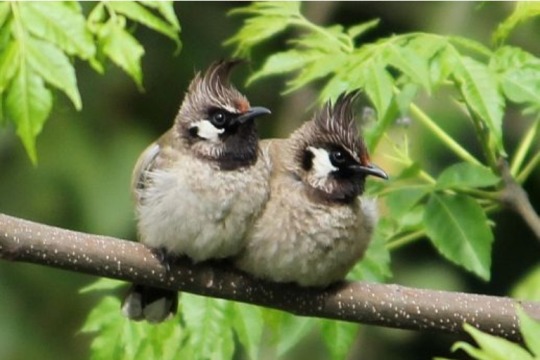
For those with a keen eye and patience, Landour offers opportunities to spot some rare and exotic birds. The elusive Koklass Pheasant, known for its striking plumage, can occasionally be seen in the denser parts of the forest. The Lammergeier, a bearded vulture with a massive wingspan, is another rare sight that can be glimpsed soaring high above the mountains.

Mammals of the Hills
Leopards are the apex predators in the forests around Landour. Although sightings are rare due to their elusive nature, the presence of these majestic cats is often indicated by pug marks and occasional roars. These solitary creatures play a crucial role in maintaining the ecological balance of the region.

The Barking Deer, also known as the Muntjac, is one of the smaller yet fascinating mammals in the region. Their distinct bark-like calls, used as alarm signals, often echo through the forests. With a bit of luck, you might spot these agile creatures darting through the underbrush.
Exploring the Wilderness
To truly appreciate the wildlife around Landour, guided nature walks and treks are highly recommended. Knowledgeable guides can take you through some of the most scenic and wildlife-rich areas, providing insights into the local flora and fauna. These walks not only offer a chance to spot wildlife but also to learn about the delicate ecosystems that sustain them.
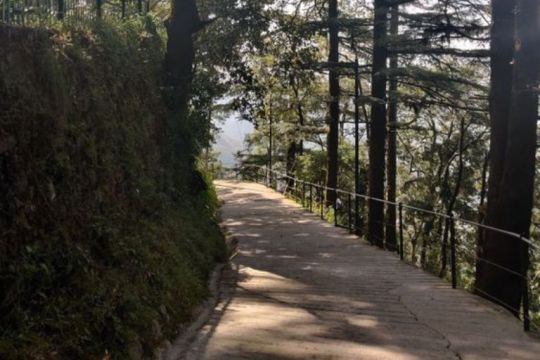
For those looking to immerse themselves in nature can stay in accommodation built around nature. Staying in these sustainable lodgings allows you to enjoy the beauty of the natural surroundings while minimising your environmental footprint. Waking up to the sounds of chirping birds and rustling leaves is an experience that brings you closer to nature.

Landour is not just a picturesque hill station; it is a sanctuary for wildlife, offering a unique blend of natural beauty and biodiversity. Whether you are an avid birdwatcher, a wildlife enthusiast, or simply someone who appreciates the wonders of nature, the wildlife around Landour promises an unforgettable experience. Come and explore this hidden gem, and let the enchanting wildlife of Landour captivate your heart and soul. At the Heart of Landour, we invite you to discover the magic of this wildlife wonderland. Admire nature from the comfort of your room, while sipping your morning coffee and reading your favourite book. Plan your visit today and embark on a journey that connects you with the awe-inspiring natural world of Landour.
#best hotel#mountain retreat#mussoorie#uttarakhand tourism#uttarakhand trip#uttarakhand#holiday resort#best stay#india#vacation#holiday#family vacation#couple#honeymoon#wildlife#flora and fauna#wildlife photography
0 notes
Text
Tarsar Marsar Trek: Exploring Kashmir's Alpine Lakes
What justifies going on a hike? What does one want to achieve—challenges, beautiful landscapes, cultural immersion, or mental renewal? Meeting all these requirements leads to what is undoubtedly the most breathtaking journey available: the Tarsar Marsar journey. A favorite in our Kashmir packages, the Tarsar Marsar Trek offers us beauty, tranquility, and a fresh perspective on camping next to stunning alpine lakes, giving The Kashmir Great Lakes Trek a run for its money.
The people of Kashmir have stories and traditions strongly linked to the two stunning lakes, Tarsar and Marsar. One of the greatest places to visit in Kashmir is the Tarsar Marsar Lakes, sometimes referred to as the "Switzerland of India," which is encircled by snow-capped mountains, covered in verdant meadows, and radiant with vibrant waters.
The two beauties of the trek

Tarsar Lake is a stunning lake with an almond form that is located 20 km east of Jammu and Kashmir's Anantnag district. It is roughly 2 km long and 0.8 km wide. A mountain divides the lake from another lake, the Marsar Lake.
Tarsar Lake freezes over and is completely covered in snow throughout the winter. You might see floating ice even in the summertime. The greatest time to go on the Tarsar Marsar Trek is in the summer, when migratory birds including black bulbuls, Himalayan golden eagles, and bar-headed geese can be seen.
A lake that changes colors with the changing sky (Tarsar Lake) and another with its glistening emerald color (Marsar Lake) – these two lakes form two of the most beautiful Lakes in Kashmir. The photography and pictures that come out of this place are jaw-dropping and words cannot explain the beauty of this place. You need to experience it, to explain it.
Navigating through the beauty of Kashmir

The distances between the Tarsar and Marsar lakes and the settlement of Nagberan are 3 and 5 kilometers, respectively. One of the best ways to fully immerse yourself in the local culture when trekking is to have the opportunity to interact with the Gujjar and Bakarwal cultures, who have warm hearts by nature. Meeting new people is one of the nicest things to do on the Tarsar Marsar hike and a great opportunity to connect with the region and its customs.
The Tarsar Marsar trek trip starts in Srinagar at the base camp in Aru, where you are greeted by friendly locals who are prepared to help you with anything you need.
You make your way gently in the direction of the Lidder River, passing through several nearby Gujjar towns and thick alpine forests. You'll tent at Lidderwat, where the nighttime scenery is breathtaking under the starry sky.
The Lidder River will be a continuous sight as you travel along it on your short trip from Lidderwat Valley to Shekwas. As you arrive in Shekwas, the distant peaks will come into full view.
CONCLUSION
In summary, the Tarsar Marsar Trek is an incredible trip that provides explorers and environment lovers with a singular chance to experience Kashmir's breathtaking alpine scenery. This hike rewards hikers with breathtaking views and tranquil natural beauty in addition to physical obstacles due to its immaculate lakes, lush meadows, and spectacular mountain backdrops. The Tarsar Marsar Trek promises a remarkable experience that completely immerses you in the heart of Kashmir's wildness, whether you're drawn to the serene surroundings, the verdant surroundings of the neighboring valleys, or the glistening waters of the Tarsar and Marsar lakes.
0 notes
Text

The black bulbul (Hypsipetes leucocephalus), also known as the Himalayan black bulbul or Asian black bulbul, is a member of the bulbul family of passerine birds. It is found primarily in the Himalayas, its range stretching from India eastward to Southeast Asia. It is the type species of the genus Hypsipetes, established by Nicholas Aylward Vigors in the early 1830s. There are a number of subspecies, mostly varying in the shade of the body plumage which ranges from grey to black, and some also occur in white-headed morphs, as also suggested by its specific epithet leucocephalus, literally "white head". The legs and bill are always rich orange-red
0 notes
Text
Bird watching around kathmandu valley
Embarking on a bird watching tour in the Kathmandu Valley unveils a rich tapestry of avian life against the backdrop of stunning landscapes and cultural heritage. Beginning at Phulchoki Hill, the highest peak in the valley, bird enthusiasts are greeted with a diverse array of species amidst lush forests and rhododendron blooms.
A unique chance to see resident and migratory birds in oak and pine forests can be had by climbing to Sivapuri Hill, a protected watershed region. Species like the Himalayan Monal, Rufous-bellied Woodpecker, and the rare Spiny Babbler can be peacefully observed in the beautiful surroundings.
The journey continues to Tokha, a quaint village nestled in the valley's outskirts. Here, birders can explore agricultural fields and forested patches, encountering species such as the Black-winged Cuckooshrike and White-capped Water Redstart.
Venturing to Bosan Danda, a ridge overlooking the valley, unveils panoramic vistas and a wealth of birdlife. Species like the Crested Serpent Eagle and Himalayan Swiftlet soar gracefully against the backdrop of terraced fields and distant mountains.
The tour then leads to Taoudaha, a serene lake surrounded by marshlands and reed beds. This wetland habitat attracts a myriad of bird species, including the Great Egret, Cinnamon Bittern, and Pied Kingfisher, offering ample opportunities for observation and photography.
Raibari, a tranquil forested area, provides a haven for birdwatchers seeking elusive species such as the Collared Owlet and Yellow-browed Warbler. The dense foliage and peaceful ambiance enhance the sense of immersion in nature's wonders.
Continuing to Sakhu, a traditional Newari settlement, bird enthusiasts can explore ancient temples and alleyways while keeping an eye out for species like the Chestnut-headed Bee-eater and White-browed Bush Robin amidst urban green spaces.
Inchangu, a pristine village surrounded by terraced fields and forests, offers a glimpse into rural life while providing excellent birding opportunities. Species like the Eurasian Jay and Black Bulbul can be spotted amidst the tranquil surroundings.
Join the Highland Eco Trek with expert guides provide valuable insights into bird behavior, ecology, and conservation efforts in the Kathmandu Valley. Whether novice or seasoned birder, this immersive journey promises unforgettable encounters with the avian treasures of Nepal's capital region, leaving lasting memories of nature's beauty and biodiversity.
1 note
·
View note
Note
Do ya have anything about white eared bulbuls ( like facts or pictures)
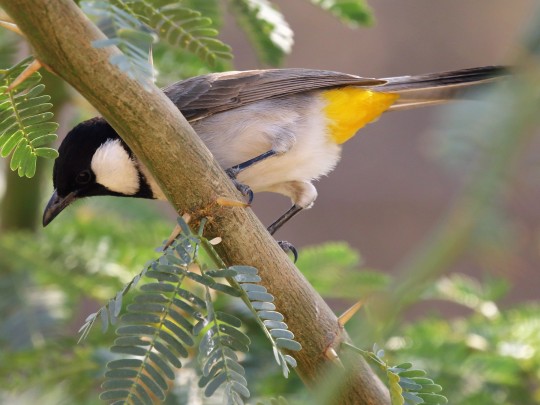

White-eared Bulbul (Pycnonotus leucotis), family Pycnonotidae, order Passeriformes, found in SW Asia, the western Himalayas, and the NE Arabian Peninsula
Formerly considered by some ornithologists to be a subspecies of the Himalayan Bulbul, Pycnonotus leucogenys.
This species does not have a regular uniform song across the species. Individuals each have different songs, which are all constructed from the same set of notes.
photographs by Rahul Singh & Bhaarat Vyas
#bulbul#pycnonotus#pycnonotidae#passeriformes#bird#ornithology#animals#nature#india#asia#middle east
281 notes
·
View notes
Text

Sanjeev Ski
Himalayan Black Bulbul
Satta Uttarakhand
30 notes
·
View notes
Text
Whispers of the Woods: Unveiling the Secrets of Basil in Kasauli
Nestled in the lap of the Himalayas, Kasauli is a serene hill station in the Indian state of Himachal Pradesh, known for its picturesque landscapes and colonial charm. Among the many attractions that this quaint town offers, Basil Woods stands out as a hidden gem, inviting nature enthusiasts and tranquility seekers to experience its enchanting beauty.
Basil Woods: A Tranquil Haven:
Basil Woods is a pristine forested area located on the outskirts of Kasauli. The woods are named after the fragrant basil plants that flourish in this region, adding a delightful aroma to the already refreshing mountain air. Unlike the more popular spots in Kasauli, Basil Woods is a secluded haven, perfect for those seeking a break from the hustle and bustle of everyday life.Basil woods kasauli
Flora and Fauna:
One of the highlights of Basil Woods is its rich biodiversity. The forest is home to a variety of plant and animal species, making it a haven for nature lovers. Tall deodar and pine trees create a dense canopy, providing shade and a sense of tranquility. Birdwatchers will be delighted to spot colorful avian residents, including the Himalayan bulbul and the vibrant minivet.
Scenic Trails for Hiking:
For adventure enthusiasts, Basil Woods offers a network of scenic trails that wind through the forested expanse. Hiking through these trails provides a rejuvenating experience, with the soothing sounds of rustling leaves and chirping birds accompanying your journey. The trails vary in difficulty, catering to both beginners and seasoned hikers.
Panoramic Views from Sunset Point:
One of the highlights of Basil Woods is the Sunset Point, offering panoramic views of the surrounding hills and valleys. The golden hues of the setting sun cast a magical spell over the landscape, creating a surreal atmosphere. This vantage point is a favorite among photographers, capturing the ethereal beauty of Kasauli in the fading light.
Conservation and Sustainable Tourism:
Recognizing the importance of preserving the natural beauty of Basil Woods, local authorities and environmentalists have taken steps to promote sustainable tourism practices. Visitors are encouraged to follow eco-friendly guidelines, such as avoiding littering and respecting the local flora and fauna. Conservation efforts aim to maintain the pristine charm of Basil Woods for future generations to enjoy.
How to Reach Basil Woods:
Basil Woods is easily accessible from the main town of Kasauli. Visitors can take a short drive or a leisurely walk to reach the entrance of the woods. It is advisable to check the local weather conditions before planning a visit, as the trails may become slippery during monsoon season.
Conclusion:
Basil Woods in Kasauli offers a tranquil retreat for nature enthusiasts, providing a perfect blend of lush greenery, diverse wildlife, and breathtaking views. Whether you are an avid hiker, a birdwatcher, or someone simply seeking solace in nature, Basil Woods promises a rejuvenating experience away from the hustle and bustle of urban life. Embrace the serenity of this hidden gem and let the enchanting beauty of Basil Woods leave an indelible mark on your soul.
0 notes
Text
Bulbul
The Bulbul bird, a charming and melodious songbird, graces our world with its presence and enchanting tunes. These delightful avian creatures have long captivated the hearts of both nature enthusiasts and those who appreciate the serenades of the wild. In this blog, we embark on a journey to explore the diverse facets of the Bulbul, from its physical characteristics to its cultural significance and the urgent need for its conservation.
Significance in Various Cultures:
Throughout history, Bulbul birds have held a special place in the folklore, art, and poetry of many cultures. These birds have often been associated with themes of love, beauty, and music. In Persian poetry, the Bulbul is frequently depicted as a symbol of love, singing its heart out to the blooming rose. Similarly, in Indian and Middle Eastern traditions, the melodious notes of the Bulbul have been likened to soulful music that stirs the emotions. This significance extends beyond the borders of Asia, as Bulbuls have been referenced in ancient Greek and Roman texts, connecting them to the appreciation of nature's harmonies.
Purpose of the Blog:
The purpose of this blog is to provide an in-depth look at the fascinating world of the Bulbul bird. We aim to not only offer a comprehensive understanding of their species and habits but also shed light on the cultural significance they hold in different societies. Furthermore, we will delve into the conservation challenges faced by these birds and the need to protect their habitats and populations.
As we explore the various aspects of the Bulbul, we hope to foster a deeper appreciation for these delightful songbirds and raise awareness about the importance of preserving the natural world and its myriad wonders. Whether you're a seasoned birdwatcher, a nature lover, or simply curious about the creatures that share our planet, this blog invites you to join us in celebrating the enchanting world of the Bulbul.
Bulbul Species and Distribution
Bulbuls are a diverse group of passerine birds known for their enchanting songs and vibrant plumage. There are numerous species of Bulbuls, each with its own unique characteristics. In this section, we'll delve into the different species and their geographical distribution.
1. Red-vented Bulbul (Pycnonotus cafer):
The Red-vented Bulbul is a common and widely recognized species, known for its striking red patch beneath its tail. Native to South Asia, it is found in countries such as India, Sri Lanka, Bangladesh, and parts of Southeast Asia. Due to its adaptability, it has also established feral populations in various regions outside its native range.
2. African Red-eyed Bulbul (Pycnonotus nigricans): This Bulbul species is found in various sub-Saharan African countries, including South Africa, Zimbabwe, and Angola. It is known for its distinctive red eye-ring and melodious calls.
3. White-spectacled Bulbul (Pycnonotus xanthopygos): The White-spectacled Bulbul, as its name suggests, is characterized by its white eyerings. Its range extends from the eastern Mediterranean to western Asia, covering regions like Turkey and parts of the Middle East.
4. Pycnonotus leucogenys (White-cheeked Bulbul): The White-cheeked Bulbul is native to the Arabian Peninsula and surrounding regions. It is easily recognizable by its white cheek patches and its melodious vocalizations.
5. Pycnonotus jocosus (Red-whiskered Bulbul): The Red-whiskered Bulbul is known for its red cheek patches and vibrant plumage. It is found in parts of South and Southeast Asia, including India, Sri Lanka, and Malaysia.
6. Pycnonotus leucotis (White-eared Bulbul): The White-eared Bulbul is native to the Arabian Peninsula and surrounding arid regions. It is known for its white ear patches and a lovely call.
7. Himalayan Bulbul (Pycnonotus leucogenys): This species is found in the Himalayan region, spanning across India, Nepal, Bhutan, and parts of Tibet. Its melodious songs are a common sound in the mountainous regions.
8. Iole olivacea (Olive Bulbul): The Olive Bulbul is found in various parts of Southeast Asia, from Indonesia to the Philippines. Its name is derived from its olive-colored plumage.
Geographical Distribution
The geographical distribution of Bulbul species varies greatly depending on the specific type. Some Bulbuls are highly localized to particular regions, while others have more extensive ranges. They can be found in a range of habitats, from dense forests to urban gardens.
The diversity of Bulbul species and their distribution across Asia, Africa, and parts of Europe and the Middle East showcases their adaptability to different ecosystems and highlights their significance in avian biodiversity. Understanding their distribution is vital for their conservation efforts, as various species face different threats and challenges in their respective habitats.
Physical Characteristics of Bulbuls:
Bulbuls are known for their charming and diverse physical characteristics. These birds belong to the family Pycnonotidae, and their traits vary among different species. Here, we will explore their size, coloration, and distinctive features.
1. Size: Bulbuls are typically small to medium-sized passerine birds, with an average length ranging from 6 to 8 inches (15 to 20 centimeters). Some species may be slightly larger or smaller, but they all fall within this size range.
2. Coloration: Bulbuls are renowned for their vibrant and colorful plumage, making them a joy to observe. Their coloration varies significantly among species, but common colors include shades of green, brown, gray, and white. Specific species may exhibit striking features such as red eye-rings, cheek patches, or distinctive tail patterns.
3. Beak and Head: Bulbuls typically have short, stout beaks that are slightly curved at the tip. These beaks are adapted for a varied diet, including fruits, insects, and nectar. The head of Bulbuls often showcases attractive features, such as crests or eye-catching patterns.
4. Eyes: Bulbuls usually have bright, expressive eyes with various eye-ring colors. Red, white, and yellow eye-rings are common among different species.
5. Wings and Tail: Their wings are rounded and may display contrasting wing bars or patches of color. The tail feathers can vary in length and may have unique patterns or coloration that distinguishes one species from another.
6. Vocal Sac: Some Bulbul species have a vocal sac, which they use to amplify their melodious calls. This sac can be inflated to enhance their singing.
7. Sexual Dimorphism: In many Bulbul species, males and females have similar external appearances, making it challenging to distinguish between them based on physical characteristics alone.
8. Molt and Seasonal Changes: Like many birds, Bulbuls undergo a molting process in which they shed old feathers and grow new ones. This can affect their appearance and coloration.
9. Song and Vocalization: While not a physical characteristic, the songs of Bulbuls are a prominent feature. They are known for their melodious and diverse calls, which vary between species.
Distinctive Features:
Distinctive features among Bulbul species include the red vent (underside) of the Red-vented Bulbul, red eye-rings in species like the Red-whiskered Bulbul, and white cheek patches in the White-cheeked Bulbul. Some species have crests or head markings that add to their charm.
Overall, the physical characteristics of Bulbuls are a testament to their beauty and the variety of forms and colors found within this family of birds. Whether through their melodious songs or their vibrant plumage, Bulbuls are a delightful presence in the avian world, capturing the attention of birdwatchers and nature enthusiasts alike.
Behavior and Habits of Bulbuls:
Bulbuls are fascinating songbirds with a wide range of daily routines, feeding preferences, nesting behavior, and social interactions. Let's explore these aspects in more detail:
1. Daily Routines:
Diurnal Lifestyle: Bulbuls are diurnal birds, meaning they are most active during the day, especially in the early morning and late afternoon.
Foraging: Their day typically revolves around foraging for food, which includes fruits, insects, flower nectar, and small invertebrates.
Vocalization: Bulbuls are known for their melodious calls, and they often start their day with singing. Their songs are used for communication, territory marking, and attracting mates.
2. Feeding Preferences:
Omnivorous Diet: Bulbuls have a diverse and omnivorous diet. They feed on a variety of food sources.
Fruits: They are excellent fruit eaters and play a significant role in seed dispersal by consuming fruits and then spreading the seeds through their droppings.
Insects: Insects and small invertebrates are an essential part of their diet, especially during the breeding season when they need extra protein for their growing chicks.
Nectar: Bulbuls also feed on flower nectar, using their specialized tongues to extract the sweet liquid.
3. Nesting Behavior:
Nest Building: Bulbuls are known for their unique cup-shaped nests, which are usually constructed in shrubs or trees. The nests are built primarily by the female.
Materials: They use a variety of materials for nest construction, including twigs, leaves, grass, and even spider silk to bind the nest together.
Incubation and Parenting: After laying eggs, both the male and female take turns incubating them and caring for the hatchlings. They are dedicated parents and are protective of their nest.
4. Social Interactions:
Group Behavior: Bulbuls are generally social birds and are often seen in small to medium-sized groups. These groups help them forage more efficiently and provide safety through numbers.
Vocal Communication: They communicate through a wide range of vocalizations, including songs, chirps, and calls. Vocalization is crucial for maintaining group cohesion and territory defense.
Territoriality: While they are social, Bulbuls can also be territorial, especially during the breeding season. They defend their nesting territories from intruders.
Mating Displays: In some species, males display to attract females. These displays may include singing, fluttering displays, and showing off distinctive features.
Bulbuls' behavior and habits are not only fascinating but also essential for their survival and ecological roles. Their diverse diet and feeding habits make them important for plant propagation, while their active and social lifestyles make them a delight to observe for birdwatchers and nature enthusiasts.
The Melodious Bulbul Song
Bulbuls are renowned for their enchanting and melodious songs, which have captured the hearts of bird enthusiasts and inspired poets and artists for centuries. Their songs are a symphony of nature, and their vocalizations play a significant role in the avian world.
Elaborating on the Beautiful Songs:
The songs of Bulbuls are a melodic treat, with a wide range of notes, trills, and whistles that vary between species. These songs are often complex and tuneful, reflecting the Bulbuls' vocal prowess. They can mimic other bird calls and even imitate sounds from their environment. The quality and tone of their songs can be quite diverse, from sweet, flute-like notes to robust and vibrant melodies. Many species of Bulbuls are known for their distinctive and repetitive calls, often characterized by clear, melodious phrases that they repeat several times.
Vocalizations and Their Role in the Avian World
Bulbuls use their vocalizations for various purposes, including communication, territory marking, and attracting mates.
Communication: They use their songs and calls to communicate within their social groups. This communication helps maintain group cohesion and coordinate activities, such as foraging and alerting others to the presence of predators.
Territory Marking: The melodious songs of Bulbuls serve as a way to establish and defend territories. When one Bulbul sings within its territory, it signals ownership and warns other Bulbuls to stay away.
Attracting Mates: During the breeding season, males use their songs to attract females. These songs are often a display of their vocal abilities and are essential for courtship.
Social Bonds: Vocalizations play a crucial role in reinforcing social bonds within the group. Bulbuls can recognize the calls of their group members and respond to them.
Ecological Role: Bulbul songs can have broader ecological implications. By dispersing the seeds of the fruits they consume, they contribute to the regeneration of plant species in their habitat. Their calls also serve as an auditory presence in the ecosystem, alerting other species to the presence of potential threats.
Cultural Significance of Bulbuls
Bulbuls hold cultural and symbolic importance in various societies across the world. These charming songbirds have found their way into the hearts and traditions of different cultures, often symbolizing themes of love, beauty, and more. Let's explore their cultural significance and the myths, stories, and folklore associated with Bulbuls in different regions:
1. Persian Culture:
In Persian poetry, Bulbuls have a prominent place. They are often depicted as messengers of love and symbols of longing. The sound of a Bulbul's song is associated with the soulful cry of a lover. Bulbuls are frequently mentioned in the works of Persian poets like Rumi and Hafez, where they symbolize the yearning of the human heart.
2. Indian Culture:
In Indian mythology and literature, the Bulbul has a strong presence. It is often associated with themes of love and devotion. The "Bulbul Tara" is a symbol of the beloved in classical Indian poetry and music, signifying the soul's journey in search of the divine.
3. Middle Eastern Culture:
Bulbuls hold symbolic significance in Middle Eastern cultures. Their songs are associated with beauty and the enchanting qualities of nature. In Arabic poetry and literature, the Bulbul is a symbol of love, representing the voice of the lover in the garden of emotions.
4. Greek and Roman Culture:
Even in ancient Western cultures, the song of the Bulbul was admired. The Greek poet Sappho wrote about the Bulbul's song, celebrating its beauty. In Roman literature, Bulbuls were associated with the beauty of spring and the enchantment of nature.
5. Chinese Culture:
In Chinese culture, the Bulbul is a symbol of happiness and good fortune. Its song is considered a harbinger of auspicious times. The Bulbul's image is often depicted in Chinese art and is associated with the arrival of spring and the renewal of life.
6. Folklore and Myths:
Various myths and folklore feature Bulbuls as characters. They are often portrayed as messengers, lovers, or companions to gods and goddesses.
In some cultures, the Bulbul's song is believed to have magical and healing properties.
Threats and Conservation of Bulbul Species
Bulbul species, like many other birds, face various challenges and threats that have led to conservation concerns. These threats include habitat loss, climate change, and illegal wildlife trade. However, conservation efforts are underway to protect and preserve these delightful songbirds.
Challenges and Threats:
Habitat Loss: One of the primary threats to Bulbul species is habitat loss due to deforestation, urbanization, and agricultural expansion. As natural habitats are converted for human use, Bulbuls lose the places where they feed, nest, and raise their young.
Climate Change: Climate change can impact Bulbuls by altering their habitats and food availability. It can lead to shifts in the timing of breeding and migration, affecting their ability to find suitable resources.
Illegal Wildlife Trade: Some Bulbul species are captured and traded as pets in certain regions, despite legal protections. This illegal trade poses a significant threat to their populations.
Invasive Species: Invasive species, such as predators that threaten Bulbul nests and invasive plants that disrupt their food sources, can negatively affect Bulbul populations.
Conservation Efforts:
Habitat Protection: Conservation organizations and governments are working to protect the natural habitats of Bulbuls through the establishment of protected areas and wildlife reserves. These efforts provide safe spaces for Bulbuls to thrive.
Reforestation and Habitat Restoration: Reforestation initiatives aim to restore habitats that have been lost or degraded. This involves planting native trees and vegetation that Bulbuls rely on for food and shelter.
Climate Change Mitigation: Addressing climate change is crucial for Bulbul conservation. Efforts to reduce greenhouse gas emissions and adapt to changing conditions can help safeguard their habitats.
Community Engagement: Conservation organizations collaborate with local communities to raise awareness about the value of Bulbuls and their ecosystems. Engaging communities in conservation efforts helps protect these birds.
Legal Protections: Many Bulbul species are protected by national and international laws that prohibit their capture and trade. Enforcing these regulations is essential to combat the illegal wildlife trade.
Research and Monitoring: Ongoing research helps scientists better understand the behavior and needs of Bulbul species. Monitoring their populations and behaviors allows for informed conservation decisions.
Education and Advocacy: Public awareness campaigns and education programs inform people about the importance of Bulbuls and encourage them to support conservation efforts.
Bulbul as Pets
The practice of keeping Bulbuls as pets has been a longstanding tradition in certain cultures, particularly in some parts of Asia. These charming songbirds are admired for their melodious songs and vibrant plumage, making them desirable as companion animals. However, the practice of keeping Bulbuls as pets raises important ethical and legal considerations.
Ethical Aspects
Habitat and Freedom: Captive Bulbuls are often deprived of their natural habitat and the freedom to live and migrate as they would in the wild. They are confined to cages, limiting their ability to fly and engage in natural behaviors.
Stress and Well-being: Captive birds can experience stress and suffer from psychological and physical health issues due to confinement, lack of stimulation, and inadequate care.
Conservation Impact: The capture of Bulbuls from the wild for the pet trade can pose a significant threat to their populations. Overexploitation can lead to declines in the wild.
Legal Concerns: Many countries have regulations and laws in place to protect wildlife, including Bulbuls, and prohibit their capture and trade. Keeping Bulbuls as pets may be in violation of these laws.
Legal Aspects
CITES Regulations: The Convention on International Trade in Endangered Species of Wild Fauna and Flora (CITES) lists certain Bulbul species, such as the Straw-headed Bulbul, in its appendices, which regulate their international trade. These regulations are in place to prevent overexploitation.
National Laws: Many countries have specific laws and regulations that protect native wildlife, including Bulbuls. These laws often prohibit the capture and trade of wild birds.
Exemptions: In some cases, keeping Bulbuls as pets may be allowed if individuals obtain permits or licenses to legally own and care for them. However, these permits are typically reserved for individuals with experience in avian care and conservation purposes.
In this blog, we embarked on a journey to explore the captivating world of the Bulbul bird, a songbird that enchants us with its melodious tunes and vibrant plumage. Here are the key points we've discussed:
Introduction: We introduced the Bulbul bird, highlighting its significance in various cultures and the purpose of this blog.
Bulbul Species and Distribution: We explored the diversity of Bulbul species and their geographical distribution across Asia, Africa, the Middle East, and Europe.
Physical Characteristics: The physical characteristics of Bulbuls, including their size, coloration, and unique features, were detailed.
Behavior and Habits: We delved into the daily routines, feeding preferences, nesting behavior, and social interactions of Bulbuls.
The Melodious Bulbul Song: We celebrated the enchanting songs of Bulbuls, describing their vocalizations and their vital role in the avian world.
Cultural Significance: We discussed the cultural and symbolic importance of Bulbuls in different societies and shared myths and stories associated with these birds.
Threats and Conservation: We addressed the challenges and threats faced by Bulbul species, highlighting conservation efforts and measures to protect them.
Bulbul as Pets: We touched upon the practice of keeping Bulbuls as pets, discussing the ethical and legal aspects of this practice.
0 notes
